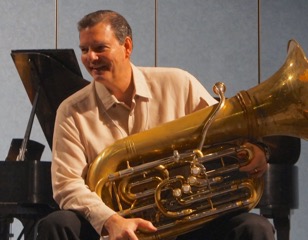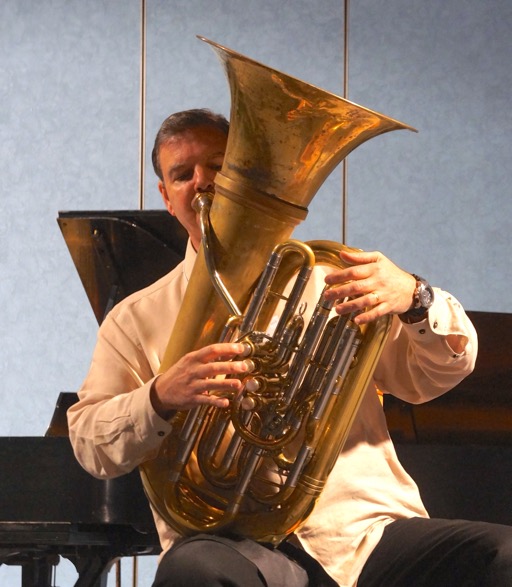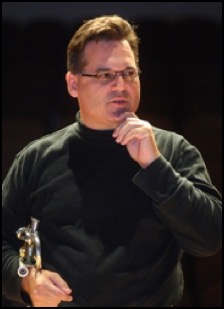70%
S-M-P
29/12/15 Filed in: Practice techniques

In March of 2015 I attended a masterclass given by tubist, Charles Villarrubia, at the Northwest Brass Festival. I had met Charlie, briefly, years before when we were both in Boston and knew him to be a spectacular tubist, even so, I was stunned by his insight and artistry.
At the masterclass I asked Charlie for a few ‘light-bulb' moments; that is, words, instructions, or excercises that his teachers had employed that had an immediate impact upon him as a player. The techniques he described came from not just tubists, but from a myriad of sources including violinists, singers and other wind musicians. This receptive approach is one of his strengths; his curiosity leads him to seek out new ideas and he accepts productive methods from wherever they come. His response provided some practical tips, and also exposed some of the roots of his success.
He mentioned in passing one of the secrets to his success: his practice routine. He is in his studio at 8:30am warming up everyday. He doesn’t practice when he feels like it, he practices on a set schedule which is nearly unchanging. To instill this ideal into his students he requires them to fill out a practice schedule every week. Not a report on how many hours they practiced last week, but rather exactly when they will practice in the coming week, i.e., scheduling practice as firmly as any class they might be taking.

His first tip relates to the importance of practicing fundamentals. His early practice session begins with work on exercises from The Brass Gym such as tonguing, slurring, scales, range and endurance--every day. As he drives to his studio at the University of Texas, Austin, he performs breathing exercises, so that when he walks into his studio he is mentally and physically prepared.
The practice technique that he learned from Marianne Gedigian, a flutist and his wife, is the 'Fermata Method.' One plays the first two notes of a phrase adding a fermata to the second note. If the note with the fermata sounds great, then one begins again, this time placing the fermata on the third note. If the fermata note is not great, one repeats until the tone is perfect--the tone, not the note. The musician continues this process until the phrase is complete. This technique is especially helpful for conquering large intervals, i.e. not letting the distance from the previous note impact the quality of the note on which the fermata rests.
For technical passages he likes to practice at 70% speed. If one practices more slowly the fundamental connection of air to note can become distorted. Charlie finds that around 70% of tempo allows him to maintain his usual technique but also overcome difficulties with fingers.

S-M-P comes from his days as a student, when his teacher, Neal Tidwell, tubist for the New Orleans Symphony, would frequently write this on the top of an assignment. S-M-P stands for Sing-Mouthpiece-Play. When Charlie was assigned an etude, he was required to sing, then buzz on his mouthpiece, then, finally, play each phrase on the tuba. This gets to the core of Charlie’s strength as a musician. He doesn’t simply play tuba, he sings music. His core intent is to deliver a musical idea, and he happens to use tuba as his basic tool: his musical impulse is rooted in the lyricism of singing. What is most impressive about a performance by Charles Villarrubia is that, even in the most technical music, such as the Carnival of Venice by Arban, one is most impressed not by his formidable technique, but by his beautiful, lyric tone.
